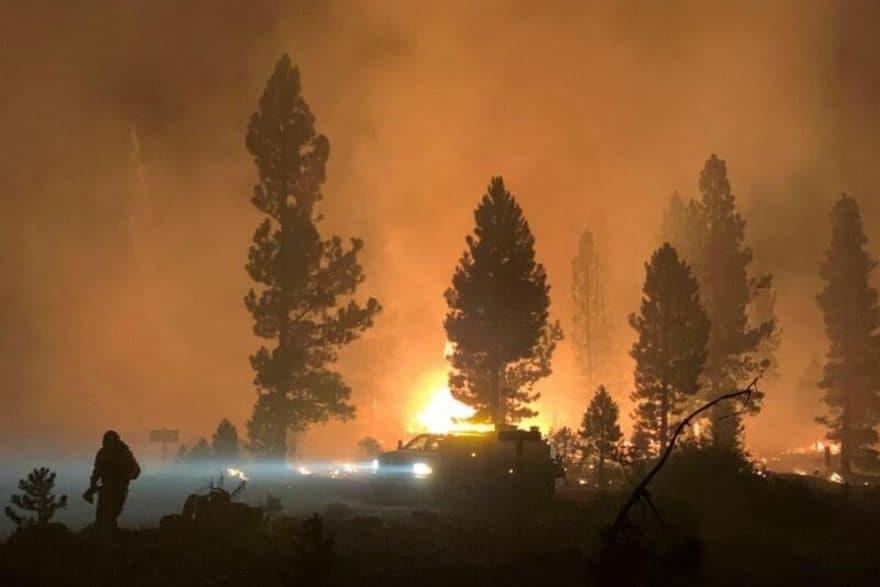MONTREAL, July 21 (AFP) - Thousands of residents fled blazes in western Canada on Wednesday (Jul 21) with several hundred soldiers scheduled to deploy to fight this year's virulent and early fires, which are wreaking havoc across portions of western North America.
"I have a holiday trailer that is my new home," said Margo Wagner, head of a district in the western province of British Columbia, who has found herself among the evacuees.
The fire marks the second time in four years that her home in the province's central Canim Lake rural area has been threatened by a blaze.
South of the border, a number of communities in the United States are being threatened by wildfires, creating conditions so extreme that the blazes have generated their own weather, according to experts.
Nearly 80 huge fires are currently ravaging hundreds of thousands of hectares in California, Oregon, Montana and Nevada.
The largest among these is still the Bootleg Fire in Oregon, which has burned through a section of land the same size as the city of Los Angeles, in just two weeks.
"The fire got so big and it creates so much energy that it started to create its own weather," Marcus Kauffman, a specialist with the Oregon Department of Forestry, told AFP, adding that the blaze "feeds on itself" and has even been making its own lightning.
Firefighters' work over the past two weeks "has undoubtedly protected hundreds of homes and we remain vigilant to the task at hand", said Ian Yocum of the Oregon State Fire Marshal.
In neighbouring California, several towns were evacuated as they faced rising flames from the Dixie Fire, a conflagration that may have been caused by a tree falling on Pacific Gas and Electric (PG&E) lines.
Last year the company pleaded guilty to manslaughter and causing a fire that devastated the nearby town of Paradise, California in 2018, due to faulty lines.
On Wednesday, it announced its intention to bury thousands of kilometres of power lines, starting with those located in areas prone to fires.
"ABSOLUTELY" SCARY
Back in Canada, British Columbia declared a state of emergency on Monday, with more than 5,700 people under an evacuation order.
"We did it in 2017 and we will do it again in 2021. Is it stressful? Is it scary? Absolutely it is," Wagner said.
Other neighbouring areas are preparing for the worst since weather conditions, particularly wind and heat, are not expected to give the more than 3,000 firefighters already battling the blazes a break anytime soon.
"I have been living here in Ashcroft for almost 25 years now and I have never seen anything like this before," said Mayor Barbara Roden, whose municipality in the centre of the province has been on high alert since Jul 14.
"The most frightening thing in a lot of ways is that we're all looking at the calendar and this is only halfway through July," she said.
Climate change amplifies droughts which dry out regions, creating ideal conditions for wildfires.
The Canadian armed forces are preparing to deploy 350 additional troops to British Columbia and 120 to Manitoba, a central province also struggling with large fire outbreaks, according to the Canadian Joint Operations Command. In Ontario, about 75 soldiers are helping firefighters.
